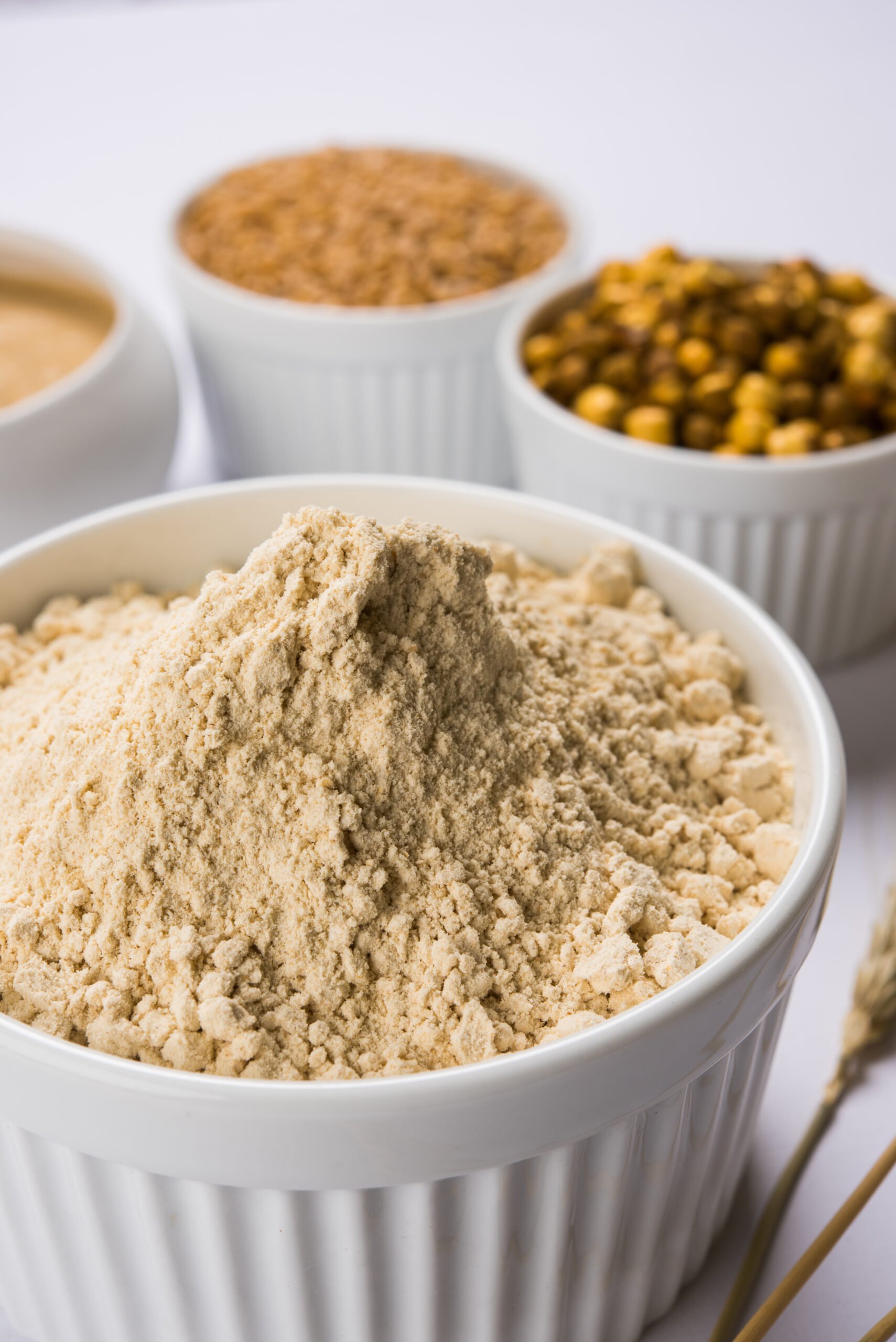 It’s been sold in clay cups on dusty lanes, stirred into steel tumblers by roadside vendors, and passed down in home kitchens as a go-to for summer heat. Sattu may look like a simple flour, but don’t let the beige fool you — this roasted gram powder has quietly powered generations.
It’s been sold in clay cups on dusty lanes, stirred into steel tumblers by roadside vendors, and passed down in home kitchens as a go-to for summer heat. Sattu may look like a simple flour, but don’t let the beige fool you — this roasted gram powder has quietly powered generations.
Today, it’s turning heads again — not just in villages, but in wellness routines, meal plans, and modern recipes. Whether you’re sipping it chilled, stuffing it into parathas, or sneaking it into smoothies, sattu brings the kind of nourishment that feels both old-school and ahead of its time.
What Exactly Is Sattu?
Sattu is a traditional flour made by dry-roasting and grinding Bengal gram (chana dal) — though in some regions, it may also include barley or other grains. The result is a nutty, roasted powder that’s naturally high in protein, fiber, and earthy goodness.
Unlike regular besan (gram flour), which is made from raw chickpeas, sattu is roasted first, giving it a deeper flavor and making it easier to digest. It requires no cooking, which is why it’s been a go-to for quick, cooling meals in hot climates — especially in Bihar, Uttar Pradesh, Jharkhand, and parts of Punjab.
From energy drinks to stuffed breads, this humble flour has earned its spot in both rural diets and modern wellness routines.
Quick Facts About Sattu
- What it is: Roasted gram flour, usually made from chana dal
- Flavor: Nutty, roasted, earthy; mild sweet or savory edge
- Best in: Drinks (savory or sweet), parathas, laddoos, protein bars
- Also used for: Smoothies, summer coolers, flatbreads
- Storage: Airtight jar in a cool, dry place; use with a dry spoon
Forms You’ll Find It In
Sattu may be a simple flour, but it comes in a few different forms depending on what it’s made from and how it’s used.
-
Pure Chana Sattu:
Made entirely from roasted Bengal gram (chana dal). This is the most common and nutrient-dense form — ideal for drinks, doughs, and porridges. -
Blended Sattu:
A mix of roasted grains and pulses like barley, wheat, or maize along with gram. Slightly milder in taste, it’s often sold as a ready-to-mix drink base. -
Flavored Sattu Drink Mixes:
Pre-mixed powders that include salt, spices, or jaggery. Handy for on-the-go sattu drinks, but check labels for additives or sweeteners. -
Homemade Sattu:
Traditionally made by dry-roasting chana dal in an iron pan and grinding it fresh. It’s coarser, more aromatic, and usually has a shorter shelf life. -
Packaged Sattu Flour:
Readily available in grocery stores and online — often labeled "Roasted Gram Flour" or "Chana Sattu." Look for freshness and a mild roasted aroma.
What Does It Tastes Like?
Sattu has a nutty, earthy, and slightly smoky flavor that comes from roasting the gram before grinding. It’s not spicy, sweet, or bitter — just deep and toasty, like a warm cereal grain with a hint of roasted peanuts.
The taste is mild enough to mix well with both sweet and savory ingredients. In a salty sattu drink, it feels hearty and grounding; in a sweet version with jaggery and cardamom, it leans warm and comforting.
Culinary Uses Around the World
Sattu may be rooted in the Indian subcontinent, but its simplicity and versatility have started to spark curiosity beyond borders — especially among those exploring plant-based and high-protein diets.
-
India:
In states like Bihar, Uttar Pradesh, and Jharkhand, sattu is a summer essential — stirred into savory or sweet drinks, stuffed into parathas, or shaped into laddoos. It’s also the soul of litti chokha, a beloved Bihari dish. -
Pakistan & Bangladesh:
Though not as widely used, roasted gram flour occasionally appears in regional drinks or energy balls, especially during Ramadan or fasting seasons. -
Nepal:
Sattu-based drinks and porridges are sometimes used in local diets as quick energy boosters in rural and farming communities. -
Middle East (diaspora fusion):
Health-conscious cooks are experimenting with sattu in smoothies, protein shakes, and flatbreads — drawn by its clean-label, no-fuss nutrition. -
Western wellness kitchens:
With the rise of ancient grains and natural protein sources, sattu is making quiet appearances in vegan recipes, DIY protein bars, and clean-eating blogs as a gluten-free flour alternative.
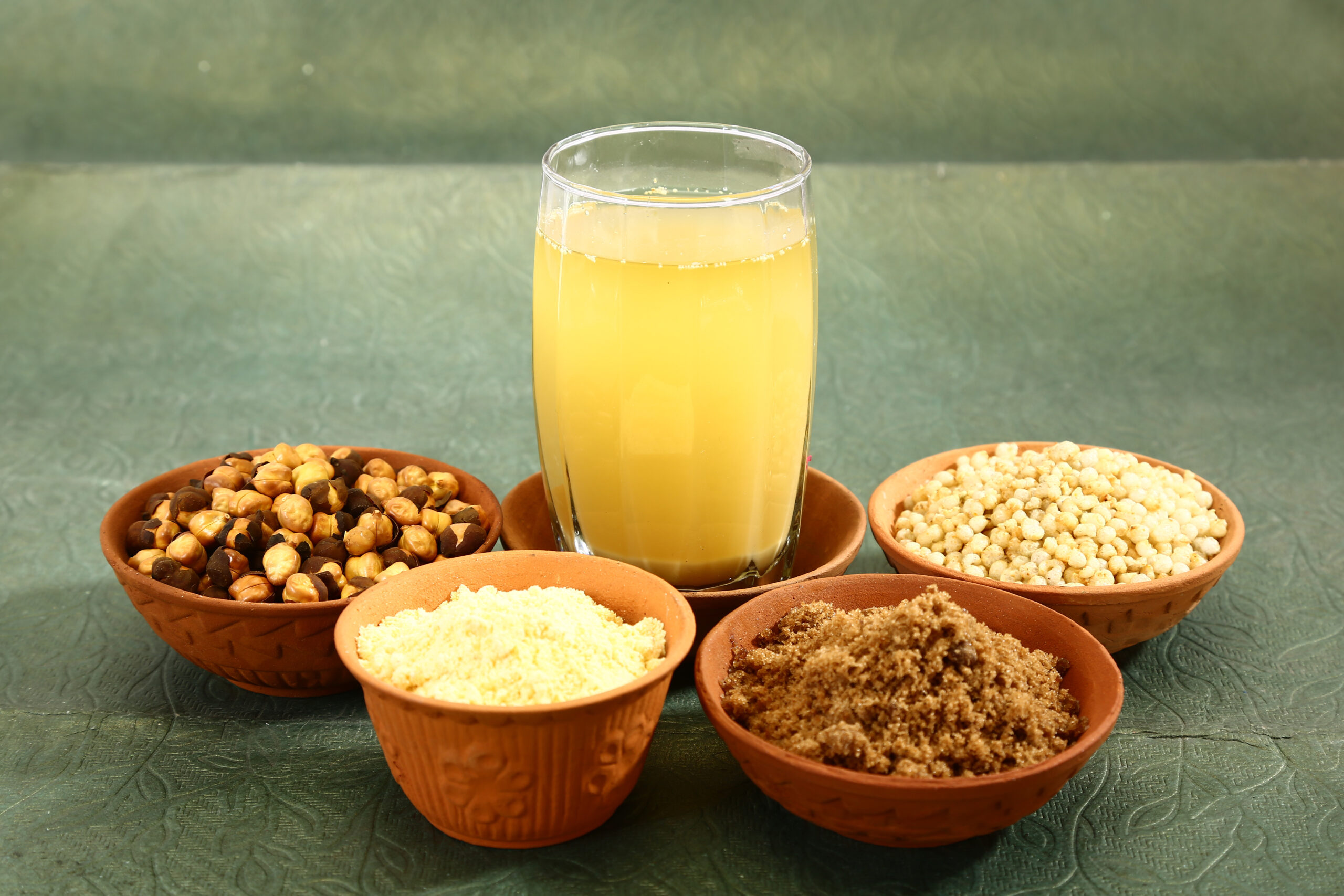
A chilled glass of sattu summer drink — the ultimate desi cooler that beats the heat and fuels your day.
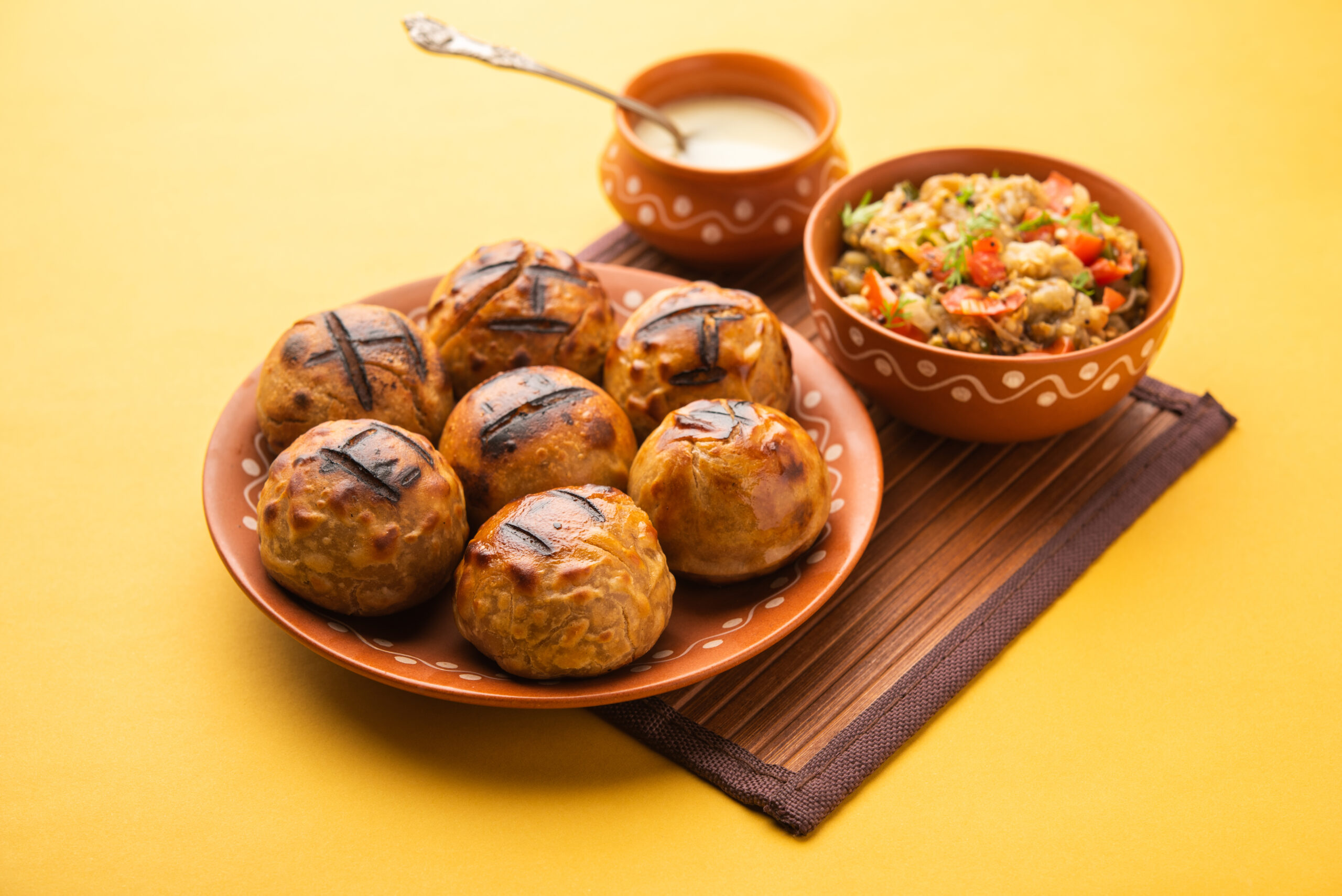
Cooking With Sattu
Sattu may look like a plain flour, but it’s surprisingly flexible — and you don’t even need a stove to make it shine. Whether you’re after a quick drink, a hearty meal, or a no-fuss snack, sattu fits right in.
-
No-cook drinks:
Mix it with water, lemon juice, salt, and roasted cumin for a savory summer cooler — or blend it with jaggery and chilled milk for a naturally sweet energy drink. -
Stuffed parathas:
Combine sattu with chopped onions, green chilies, mustard oil, and spices. Use this mix to stuff into whole wheat dough and roll out delicious, protein-packed parathas. -
Sattu laddoos:
Roast sattu lightly in ghee, add jaggery or sugar, and shape into wholesome sweet balls. Great for snacking or festive offerings. -
Sattu pancakes or cheelas:
Mix sattu with water, salt, spices, and herbs to make quick savory pancakes — ideal for breakfast or light dinners. -
As a thickener or binder:
Add it to soups, stews, or patties where you need thickness and nutrition without gluten or processed ingredients.
Modern Ways to Use Sattu
Sattu’s no longer just a rural energy booster — it’s quietly showing up in kitchens where clean eating, convenience, and creativity matter. Here’s how to use it in fresh, modern ways without repeating the classics.
-
As a gluten-free flour boost:
Add a spoonful of sattu to your pancake, waffle, or muffin batter for a subtle nutty flavor and extra protein — without the gluten. -
In smoothie bowls and breakfast jars:
Stir it into overnight oats or yogurt bowls. It thickens beautifully and keeps you full longer — great with berries, seeds, and honey. -
In vegan protein bars:
Mix sattu with nut butter, dates, and cacao nibs, then press into bars for a no-bake snack that travels well and tastes like effort. -
As a savory coating or crust:
Use sattu as a dry rub or crust for paneer, tofu, or even roasted veggies. Add herbs and spices for a quick protein-rich coating. -
In detox drinks with a twist:
Blend with coconut water, lemon juice, and mint for a refreshing, alkaline-friendly sattu cooler — lighter than traditional sharbat but just as satisfying. -
As a creamy thickener in dips:
Whisk into yogurt or tahini to give hummus-style dips a roasted edge and an added fiber punch.
Flavor Pairings
Sattu has a deep, roasted taste that plays well with both bright and bold flavors. Here’s what brings out its best:
-
Lemon or lime – Brightens up sattu drinks and cuts through its earthy heaviness.
-
Mint and coriander – Add freshness in savory dishes like parathas or savory drinks.
-
Cumin and black salt – The classic combo for a tangy, cooling sattu sharbat.
-
Jaggery and cardamom – Sweet, warm flavors that soften sattu’s boldness in laddoos or breakfast drinks.
-
Yogurt – Gives body and a creamy contrast in dips or savory smoothies.
-
Peanut butter or dates – Great for no-bake bars or protein snacks with a sweet-savory balance.
-
Cocoa powder or banana – Surprisingly delicious when blended into smoothies with a chocolatey or creamy base.
These pairings help sattu feel less “rustic” and more versatile, making it easier to experiment with in everyday meals.
How to Store It Right
Sattu may be dry and shelf-stable, but it’s still sensitive to moisture and odors. To keep it fresh:
-
Use an airtight container — Preferably glass or BPA-free plastic, to avoid absorbing smells or moisture.
-
Store in a cool, dry place — Away from sunlight, heat, and humidity. A pantry or cupboard works well.
-
Keep it refrigerated in hot climates — Especially if you’ve opened a large pack or live in a humid area. It helps prevent clumping or spoilage.
-
Avoid using wet spoons — Always use a dry spoon when scooping, as even a little water can shorten its shelf life.
Stored right, sattu can last 3–6 months without losing its flavor or quality.
Nutritional Value (per 100 g of Sattu)
- Calories: ~400 kcal
- Protein: 22–25 g
- Fiber: 10–12 g
- Carbohydrates: 55–60 g
- Fat: 6–7 g (mostly unsaturated)
- Calcium: ~200 mg
- Iron: ~5–6 mg
- Magnesium: ~150 mg
- B vitamins: Especially folate and thiamine
Key Health Benefits
- Excellent plant-based protein source for vegetarians and vegans
- High in fiber to support digestion and satiety
- Helps keep energy steady during hot weather and fasting
- Rich in minerals like iron, magnesium, and calcium
- Gluten-free and naturally nourishing
Health Benefits of Sattu
Sattu isn’t just filling — it may actually support your health in several surprising ways. Here's what a scoop of this roasted gram flour might do for you:
-
May help with digestion
Its high fiber content may promote smoother bowel movements and support gut health (Source). -
Can aid in cooling the body
Sattu drinks are often used in summer to help lower body heat and prevent dehydration (Source). -
May support energy levels
With its blend of protein and complex carbs, sattu can offer sustained energy without causing sugar spikes (Source). -
Can assist in managing weight
The fiber and protein in sattu help you feel fuller longer, which may reduce unnecessary snacking (Source). -
May help regulate blood sugar
Sattu’s low glycemic index means it may be a good option for people looking to maintain stable blood sugar (Source). -
May benefit heart health
Its magnesium and potassium content, while modest, can contribute to better blood pressure regulation (Source).
Potential Health Risks
While sattu is generally safe and well-tolerated, a few considerations are worth keeping in mind — especially if consumed in large quantities or with specific health conditions.
-
May cause bloating or gas in some people
Since sattu is made from legumes, it can trigger digestive discomfort in individuals sensitive to high-fiber or high-residue foods (Source). -
Can interfere with nutrient absorption
Like other legumes, sattu contains phytates, which may reduce the absorption of minerals like iron and zinc if consumed in very large amounts (Source). -
May not suit those with kidney issues
Sattu contains natural oxalates, which may contribute to kidney stone formation in sensitive individuals. Those with a history of kidney stones should consult a doctor before regular consumption (Source). -
Possible allergic reaction (rare)
Although uncommon, some individuals allergic to legumes or gram flour may experience symptoms and should avoid sattu (Source).
Final Thoughts
Sattu may not shout for attention on the spice rack, but it quietly does a lot — from fueling long days to adding depth to drinks, doughs, and desserts. Whether you're sipping it in a cooler, baking it into a bar, or giving your gut a gentle nudge, this roasted gram flour brings both tradition and nutrition to the table.
It’s affordable, flexible, and packed with real substance — and that makes it more than just another trendy ingredient. It’s the kind of pantry staple that earns its spot by doing the job, every single time.
FAQs
What is sattu made from?
Sattu is typically made by roasting Bengal gram (chana dal) and grinding it into a fine, nutty flour.
Is sattu gluten-free?
Yes, sattu is naturally gluten-free, making it suitable for people with gluten sensitivities or celiac disease.
Can I eat sattu every day?
In moderation, yes. It's rich in nutrients and fiber. However, overconsumption may cause bloating in some people.
Is sattu good for weight loss?
Sattu may help with weight management due to its high fiber and protein content, which help keep you full longer.
Can I use sattu in smoothies?
Absolutely! Sattu blends well into smoothies for an earthy, protein-rich boost — try it with banana, almond milk, or cocoa.
What’s the best way to drink sattu?
Traditionally, it's mixed with water, lemon, salt, or jaggery for a cooling and nutritious summer drink.
Learn More About Sattu (Roasted Gram Flour)
Wikipedia — Sattu
This article explains what sattu is, its common ingredients like roasted gram or barley, and how it’s used as a primary or secondary ingredient in a variety of dishes—from energy drinks and stuffed flatbreads to regional porridges—highlighting its cultural significance and nutritional value across South Asia.
HealthFoodDesiVideshi — Sattu or Roasted Gram Flour
This short engaging article highlights the nutritional power of sattu (roasted gram flour) noting its health benefits, making it a favorable choice for people with diabetes or those watching their weight.


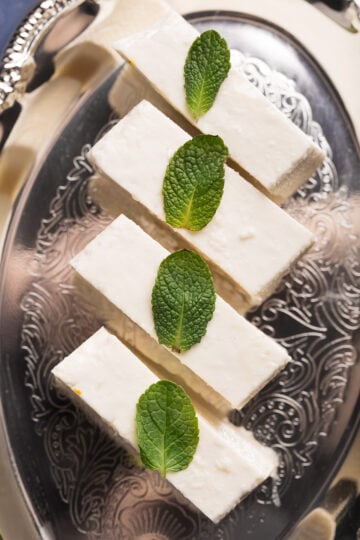
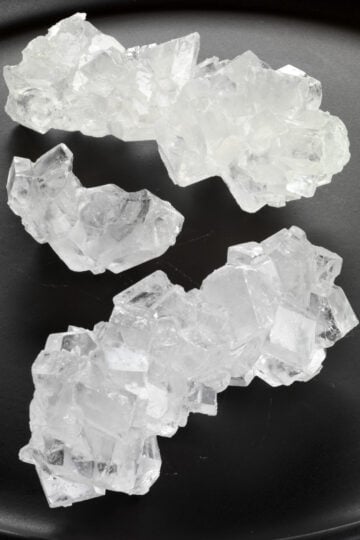
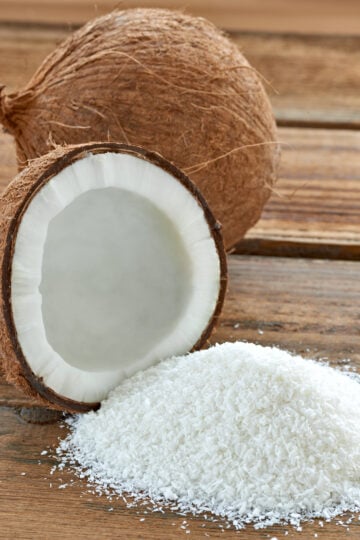
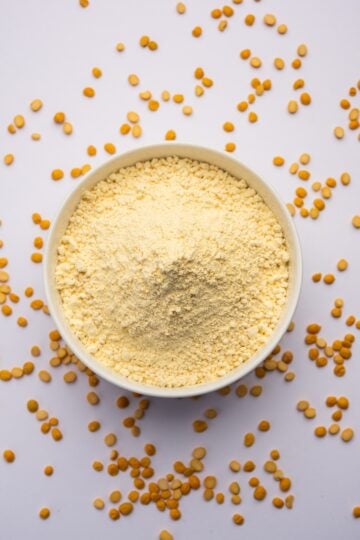
Have a question or something to share? Leave a comment below!